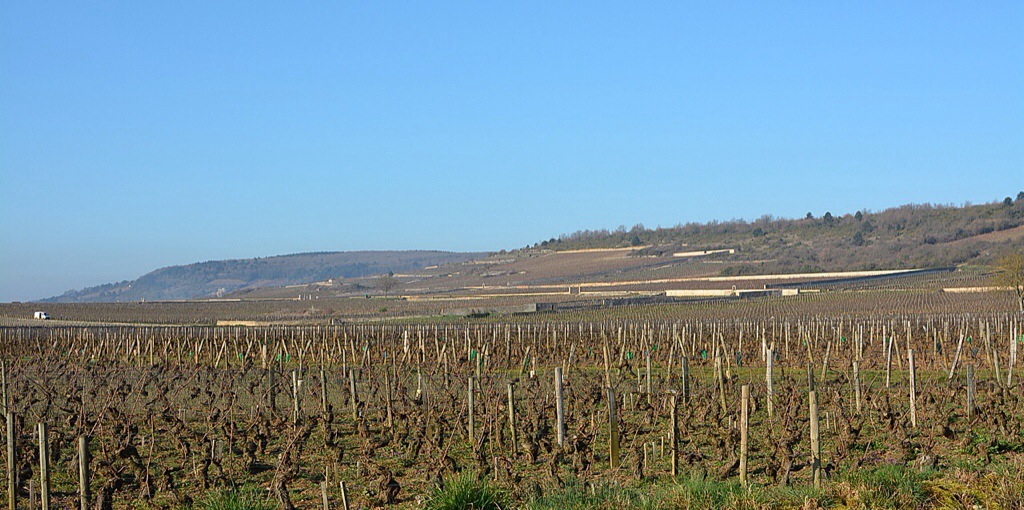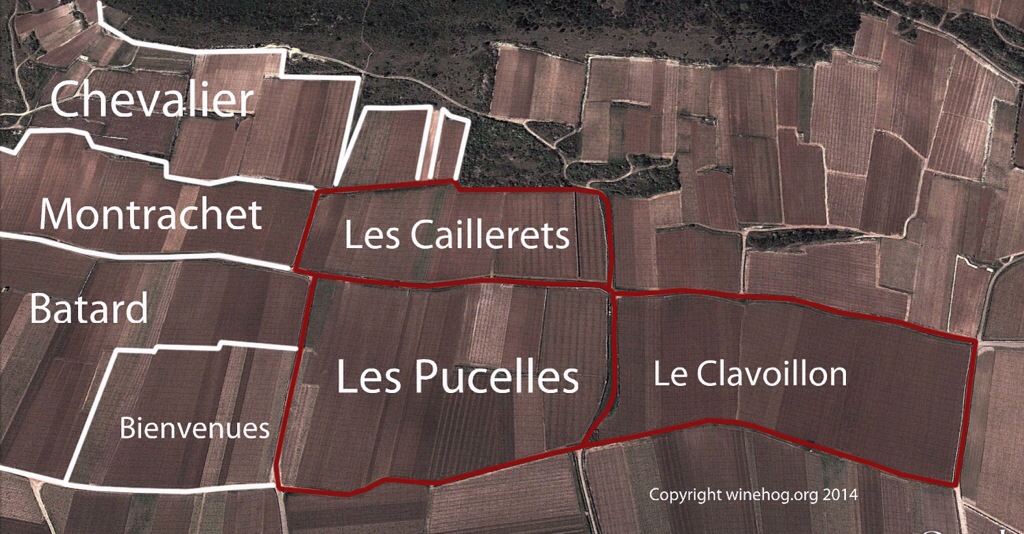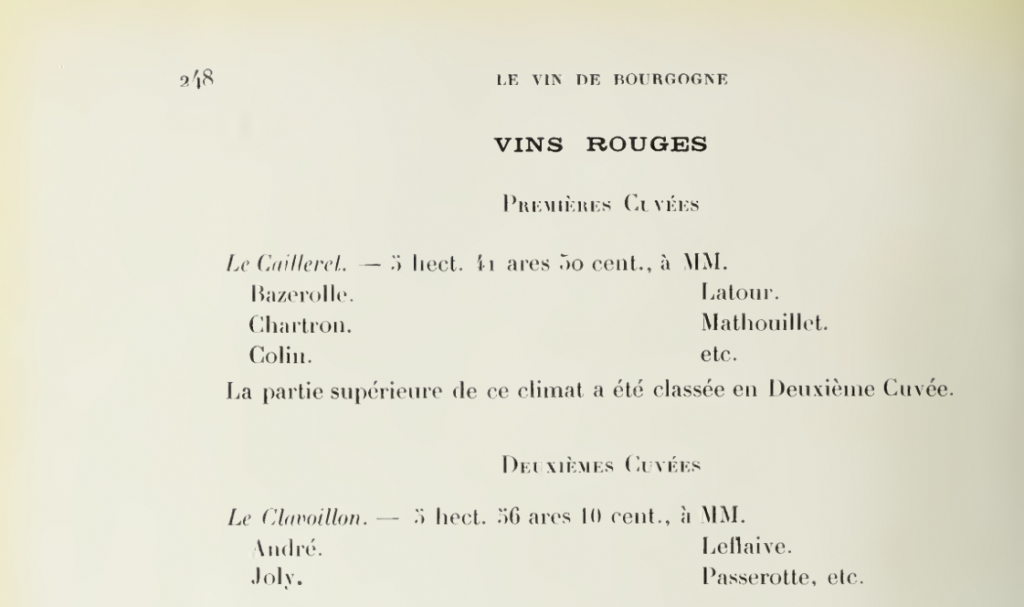I have old, fond memories of Domaine Leflaive, and have for many years treasured the Leflaive style.
While Leflaive has what one could call the “full monty” of Puligny-Montrachet’s great wines, one vineyard is a bit overlooked: Clavoillon.

This is for me, however, a wine with extraordinary emotional qualities that offers delightful hedonism. In plain English: It drinks very well indeed.
The delights of Lameloise
In 1999 I made my first visit to the three-star Michelin restaurant Lameloise in Chagny. I sat in the front room at a table in the back part of the room, and got the full treatment.
This was back in the days when the former sommelier was there, observing the room over the top of his spectacles, and the food was rich and truly Burgundian, with Jacques Lameloise still running the kitchen.
With the foie gras (three different ways) we had the Domaine Leflaive Puligny-Montrachet Clavoillon 1992.
The food and wine were a perfect combination, with the liveliness and drinkability of the vivid 1992 Clavoillon a delightful match for the rich dish, dancing its airy steps of vinous graciousness and mineral intensity. A charming Puligny Girl that appeared just in from the vineyards, yet which complemented the delicate food perfectly.
Clavoillon can have a unique, airy lightness that offers freshness and perfect Puligny minerality as the backbone for energy and zen-like balance.
The 1992 vintage had this unique vinous balance that makes some of the village wines and lesser 1er crus shine. On that occasion, the last drops of Clavoillon ’92 graced our palates with the cheese on a beautiful summer night.
That fabulous first dinner at Lameloise was followed by a glass on Place Carnot in Beaune after taking the train back from Chagny. Those were indeed the days.
The red Pulignys – almost gone
Clavoillon has lovely qualities as a white wine, but in fact it was producing red when Lavalle and Rodier wrote their famous books.
Today, the village of Puligny-Montrachet is associated with gorgeous white Burgundies, some of the best white wines in the world.
This was, however, not the case when Lavalle wrote his book in 1855. Quite a few of the famous vineyards in Puligny-Montrachet were producing reds, and they were therefore not included in Lavalle’s classification of the white terroirs.

Les Caillerets, Les Pucelles and Clavoillon seen from north
Three of the top Puligny 1ers crus were missing in the white classification, to be found in the classification of the village’s red terroirs.
The red classification included the following highly esteemed terroirs1:
- Les Caillerets – Premiére Cuvée (5 ha 41 ares 50 cent)
- Clavoillon ou Clovaillon – Premiére Cuvée (5 ha 56 ares 10 cent)
- Les Pucelles – Premiére Cuvée (6 ha 80 ares 95 cents)
Particularly Les Pucelles and Les Caillerets are today ranked among the very best 1ers crus in Puligny-Montrachet, and are often mentioned as among the most obvious candidates for elevation to grand cru.
Even my beloved Clavoillon is mentioned as a red terroir by Lavalle. The map below shows the location of the old red terroirs. Please note that Les Caillerets was significantly larger in 1855, as it then included the northern section of Chevalier-Montrachet (the two areas in white above Caillerets). These sections were added into the Chevalier-Montrachet appellation in 1938, 1939 and 1974.

According to Lavalle,1 the Premiére Cuvée reds in Puligny were highly regarded in 1855 and many people considered the quality to be on par with the Premiéres Cuvées from the Beaune appellation.
The Rodier classification in 1920
In 1920, Rodier3 also mentioned the three terroirs Les Caillerets, Clavoillon and Les Pucelles as red wine-producing vineyards. The quality classification was, however, more nuanced than Lavalle, as Les Caillerets was the only red Premiére Cuvée (and only the best part of that vineyard). The lesser plots of Les Caillerets, much of Les Pucelles and all of Clavoillon were classified as Deuxiémes Cuvée. The lesser parts of Les Pucelles were classified as Troisiéme Cuvée.
In Rodier Leflaive is already included amongst the owners of Clavoillon hence more than indicating that they in 1920 made reds from the Clavoillon plot – see below.

You need to login as a Premium subscriber to read the rest of this article. If you are not a Premium Subscriber, use the subscribe function and sign-up.

 - A true vin d’émotion – a Burgundy of passion
- A true vin d’émotion – a Burgundy of passion - A truly hedonistic wine – lively and enjoyable
- A truly hedonistic wine – lively and enjoyable - A vivacious wine for pure indulgance
- A vivacious wine for pure indulgance - A potential vin d´émotion - frais et léger
- A potential vin d´émotion - frais et léger
Sir – As always, thanks for this write-up! Question: Have you recently tasted the ’96 Clavoillon? I wonder if that sits among the level of the ’92 and ’14 for you. Thanks! SH.
No have tasted most of the other 1996s from Leflaive ..aside from the Montrachet. In general they keep very well and in general no issues.